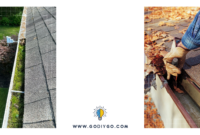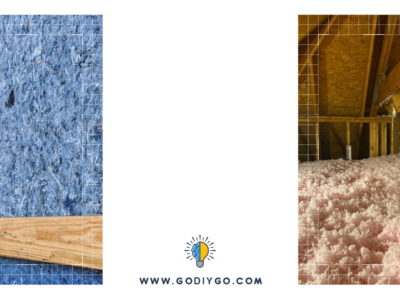Dealing with dirty drains in the home can be quite a nuisance for homeowners. They cause a bad smell in the house, making it uncomfortable to live in the space. The dirt from the drains can also cause bacterial infections, which can be fatal under certain circumstances.
Dirt in the drains causes blockage of the sewerage system, which is fixable by using DIY dirty drain cleaning techniques. Start by removing the odors and any buildups using vinegar and other disinfectants. The next step is to remove the clogs using a plunger.
Not all clogs are removable using vinegar and plungers. If there is a lot of dirt in the pipes, contact the plumbing professionals at Clover Services. They are available any time of the day and respond to emergencies swiftly. You don’t have to struggle doing the task yourself.
How To Clean A Dirty Drain
There are many reasons for cogs in the drainage system. For example, kitchen sinks mainly clog due to big objects, like legumes, that are flushed down the sink or oil and grease buildup. Bathroom tabs can clog due to hair and soap buildup in the drainage system.
Before cleaning the drain, you should first remove any excess water in the sink to see the pores. Draining the sinks helps to reduce the odor and enables you to see any possible causes of clogs. If the objects are invisible, follow these steps to clean them.
1. Remove Any Odors
The drain stinks because of the standing water and dirt. Some of the ways you can remove the odors are:
a. Use White Vinegar And Baking Soda
Measure a half cup of baking soda and another half cup of vinegar and pour into the sink. Let the two substances sit for about 15 minutes. The next step is to pour boiling water into the drain.
The baking soda and vinegar help remove odors and kill bacteria in the drain pipes. The mixture also removes stains and any residue that could be causing clogs, making it easier for the water to flow down the drain.
b. Use A Biological Cleaner
Biological cleaners will kill any bacteria and mold in your drain, and they keep your sinks and drains smelling good. These cleaners are also safe for the septic tank and the environment. Before using the cleanser, ensure you read the instructions.
2. Remove The Clogs
Now that the drain is not too smelly, you can work on it comfortably. The next step is to remove the clogs to allow water to drain effortlessly. These methods will help you.
a. Use A Plunger
Most homeowners will go for a household plunger first because it is the most common unclogging tool. It pushes dirt down the toilet drain, kitchen sinks, and bathtubs. Before starting, first, fill the sink or tub with water.
Place the plunger on the drainage holes and press it down firmly. Pressing the plunger firmly creates a tight seal in the drain. Several pushes could push down the dirt and unclog the drain. If you are unclogging a kitchen sink, don’t use the toilet plunger.
b. Using A Barbed Plastic Drain Cleaning Tool
An alternative to the plunger is a barbed plastic drain cleaning tool. However, this method works differently. If you suspect the dirt in the drain is hair, you can use this tool to pull the stuck hair. They can also pull out other materials from the drain and unclog it.
c. Melt The Grease With Hot Water Or A Heating Pad
Kitchen sinks clog due to condensed grease and oils in the drain. An easy way to remove any grease and oil buildups in the pipe is by pouring hot water directly into the sink pores.
You can also wrap the trap pipe under the sink with a heating pad. It will melt any grease and oils and help the drain pipes clear. Using the hot water and dish detergent helps with clearing the drain.
d. Contact A Plumber
Some drain clogging causes are complicated to fix with DIY techniques. If you cannot handle the problem, contact a plumber to open up the drain system. They will find out the cause of the clogging and deal with the source of the issue promptly.
Prevent Future Drain Clogs
Knowing how to clean dirty drains doesn’t mean they will never get blocked again. Luckily, you can prevent your drains from blocking and save maintenance costs. Some of the ways to keep your drains safe are;
1. Installing Drain Screens
Drain screens enable water and small particles to pass down the drain but block large particles. When you pour water with large seeds and toys, they will be trapped by the drain screen. You can then throw the collected toys and seeds in a dustbin to avoid clogs.
2. Avoid Pouring Grease Into Your Sink
Grease is a leading cause of kitchen sink blocking. The liquid oily substance hardens when mixed with cold water, causing clogs. To protect your sink from the bad smell caused by clogs, ensure you wipe the greasy utensils before washing them.
3. Inspect And Maintain Your Sinks Regularly
Incorporate sink inspections and maintenance in your routine. This does not require a plumber, so you can do it yourself. If you notice any signs of clogging, you can call a plumber to fix the drain fast.
Maintaining the sink is also easy. Pour hot water occasionally to burn down any grease and oils once every week. You should also clean your sink stoppers to remove any grease and other particles which could cause a blockage.
If your drain system has a problem, get a professional plumber to reinstall it. They will recommend the best drain pipes and sinks to avoid dealing with unwanted drain problems.
Final Words
Dirty drains may seem like a small problem, but they can lead to expensive repairs down the line. Once you notice your sink is not passing water as it should, get the cleaning tools and detergents fast. You should also hire a plumber to help you fix the problem. Hopefully, this cleaning guide will help you.
















